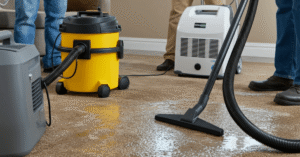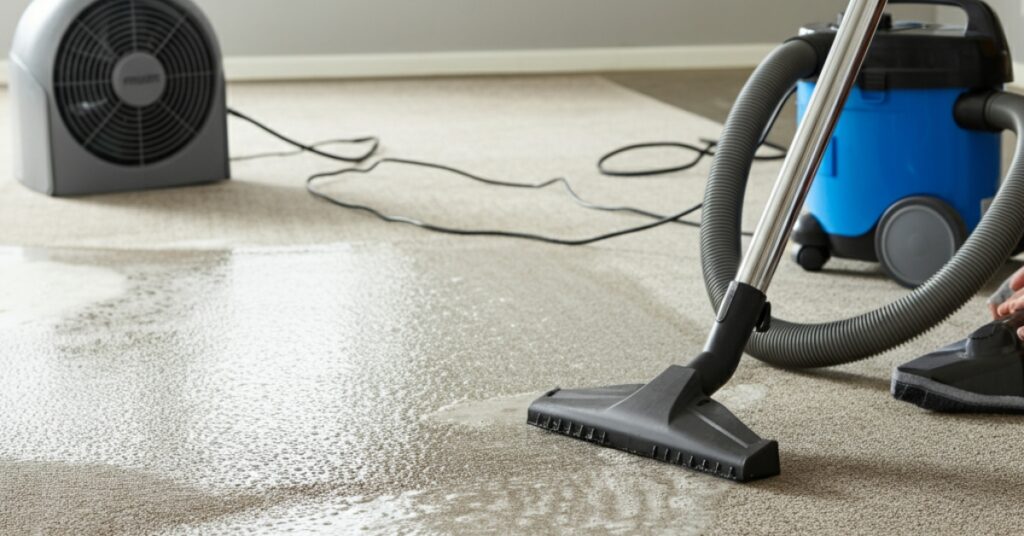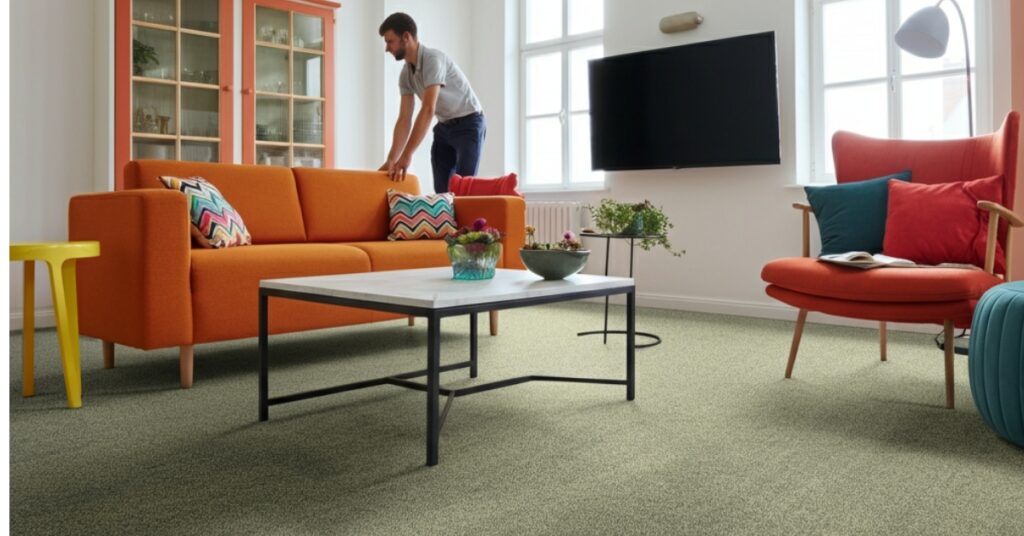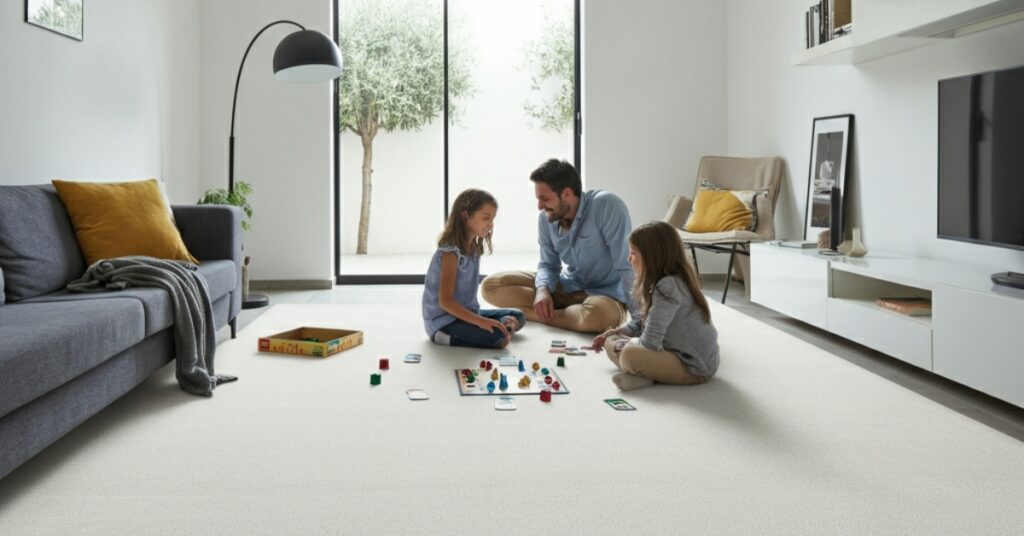As an Amazon Associate, I earn from qualifying purchases.
Choosing the right flooring is a major decision for any homeowner, and polyester carpet is often a top contender due to its affordability and vibrant color options. If you’re exploring new carpeting, you’ve likely come across polyester as a popular synthetic fiber. Understanding its specific characteristics is key to determining if it meets the demands of your lifestyle and home environment.
Modern manufacturing has improved polyester carpets significantly, making them a more resilient option than their predecessors. This guide provides a comprehensive look at polyester carpeting, covering its benefits, potential drawbacks, and ideal use cases. You’ll gain the necessary information to make a well-informed decision for your flooring project.
Understanding Polyester Carpet Construction
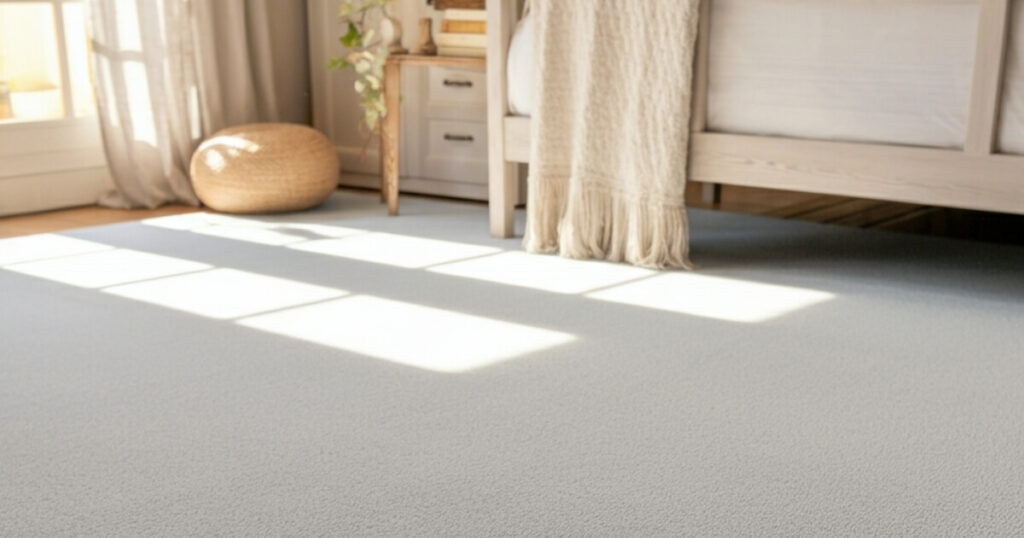
What Exactly Makes Polyester Carpet Unique?
A polyester carpet is crafted from polyethylene terephthalate (PET) fibers, created through a chemical reaction involving petroleum, coal, water, and air. The resulting polymer is spun into long threads that form the soft, plush pile of the carpet. Polyester stands out for its exceptional softness and ability to hold vivid, fade-resistant dyes, which explains why it’s available in countless colors and styles.
Historically, polyester wasn’t known for durability. However, advancements in fiber technology have greatly enhanced its strength and resilience. Many modern polyester carpets are made from recycled materials, such as plastic bottles, making them an eco-friendly flooring choice. This combination of comfort, aesthetic versatility, and sustainability has made polyester increasingly popular among homeowners.
How Polyester Stacks Up Against Other Carpet Fibers
When selecting carpet, you’ll often choose between polyester and nylon. Nylon has long been the industry standard for durability and resilience, making it ideal for high-traffic areas like hallways and stairs. It has excellent “memory,” meaning it bounces back easily from foot traffic and heavy furniture. However, nylon typically costs more and lacks the natural stain resistance of polyester unless treated.
Polyester carpet, conversely, offers superior natural stain and fade resistance. Its non-porous fibers prevent spills from setting in, making it excellent for homes with children or pets. While not as resilient as nylon, high-quality polyester performs well in low to medium-traffic areas. Polyester also feels softer to the touch and generally costs less, offering a luxurious feel at a lower price point.
Key Advantages of Polyester Carpet Installation
Exceptional Softness Creates Ultimate Comfort
One of the most significant advantages of a polyester carpet is its luxurious softness. The fibers are constructed to be incredibly fine, resulting in a plush, comfortable surface that feels wonderful underfoot. This makes it an excellent choice for areas where comfort is a priority, such as bedrooms, nurseries, or family rooms where you spend time on the floor.
This inherent softness doesn’t limit variety. Polyester carpets come in numerous piles and textures, from deep, shaggy styles to dense, cut-pile options. Regardless of the style you choose, the underfoot feel remains consistently gentle and welcoming. This adds a layer of coziness and warmth to any room in your home.
Built-in Stain Protection Simplifies Maintenance
Polyester’s chemical structure gives it natural resistance to water-based stains. The fibers are “hydrophobic,” meaning they repel liquids rather than absorbing them. This quality makes cleaning up spills from drinks, food, or pet accidents much easier. For many families, this built-in protection is a major selling point because it reduces stress associated with everyday messes.
Color is infused into the fiber during manufacturing, so polyester also resists fading from sunlight exposure. Vibrant hues remain true for years, even in rooms that receive abundant natural light. This combination of stain and fade resistance ensures your carpet looks fresh and new for longer periods.
Budget-Friendly Option Delivers Great Value
For homeowners working within specific budgets, polyester carpet offers fantastic value. It’s generally one of the most affordable synthetic carpet options available, often costing significantly less than nylon or wool. This allows you to achieve a high-end, plush look and feel without a steep price tag.
Cost savings extend beyond the initial purchase. Because it’s durable enough for most residential settings and requires simple maintenance, polyester carpet can be a cost-effective long-term investment. Its ability to resist common household stains without needing expensive chemical treatments adds to its overall value, making it a smart financial choice for many homeowners.
Potential Drawbacks to Consider
Resilience Limitations in High-Traffic Areas
While modern polyester carpet is more durable than ever, it still falls short of nylon in terms of resilience. The fibers don’t have the same level of “bounce-back” as nylon, meaning they’re more susceptible to crushing and matting in high-traffic areas. Over time, pathways can form in hallways, on stairs, and in main living areas where foot traffic is constant.
This makes polyester less ideal for the busiest parts of your home. Heavy furniture placement on polyester carpet may cause permanent indentations in the fibers. While choosing low-pile, high-density construction can help mitigate this issue, it remains a key consideration for anyone planning to install carpeting in very active households.
Vulnerability to Oil-Based Stains
Although polyester excels at repelling water-based stains, it’s vulnerable to oil-based ones. The fibers are “oleophilic,” meaning they attract and absorb oils. Spills from greasy foods, lotions, or tracked-in asphalt can be challenging to remove and may leave permanent marks.
Cleaning up oily spills immediately with a cleaning solution designed for synthetic carpets is crucial. Some polyester carpets come with manufacturer warranties that cover staining, but it’s important to read the fine print to understand what is and isn’t included. For kitchens or dining areas, this weakness might make polyester a less suitable option.
Essential Maintenance Tips for Long-Lasting Results
Regular Vacuuming Prevents Fiber Breakdown
Proper maintenance is essential for extending your polyester carpet’s life. Regular vacuuming is the most important step you can take. You should vacuum your carpet at least once or twice weekly, and more frequently in high-traffic areas. This removes dirt and debris before it settles deep into the fibers and causes them to break down.
Using a high-quality vacuum with strong suction and an adjustable beater bar is recommended. For thicker or higher-pile carpets, you may want to raise the beater bar to avoid damaging the fibers. Consistent vacuuming not only keeps the carpet looking clean but also helps prevent the pile from matting down over time. For more information you can read our guideline on: How to Vacuum Carpet?
Quick Spill Response Prevents Permanent Staining
The key to preventing stains on polyester carpet is acting quickly. For water-based spills, gently blot the area with a clean, dry cloth, working from the outside of the spill inward to prevent spreading. Avoid rubbing, as this can push liquid deeper into the fibers and damage their texture.
For stubborn or oil-based stains, you may need specialized carpet cleaner. Always test cleaning products on an inconspicuous spot first to ensure they don’t discolor the carpet. Following manufacturer cleaning guidelines protects your investment and keeps your warranty intact. Professional steam cleaning is recommended every 12 to 18 months to refresh fibers and remove embedded dirt. Interested in similar topics? This blog might help: How Thick Should Carpet and Pad Be?
Making the Right Choice for Your Home

Polyester carpet can be an excellent choice for many homes, but its suitability depends on your specific needs. It’s perfect for bedrooms, offices, or formal living rooms where comfort is a priority and foot traffic is relatively low. Its stain resistance also makes it practical for households with children, as long as you’re diligent about cleaning up oily messes.
However, if you’re carpeting high-traffic areas like main staircases, busy hallways, or family playrooms, nylon might be a better long-term investment due to its superior resilience. Carefully consider your lifestyle, budget, and the specific demands of each room before making a final decision. By weighing the pros and cons, you can confidently choose carpet that will serve your home well for years to come. For more information you can read our guideline on: How to Make a Carpet Soft Again ?
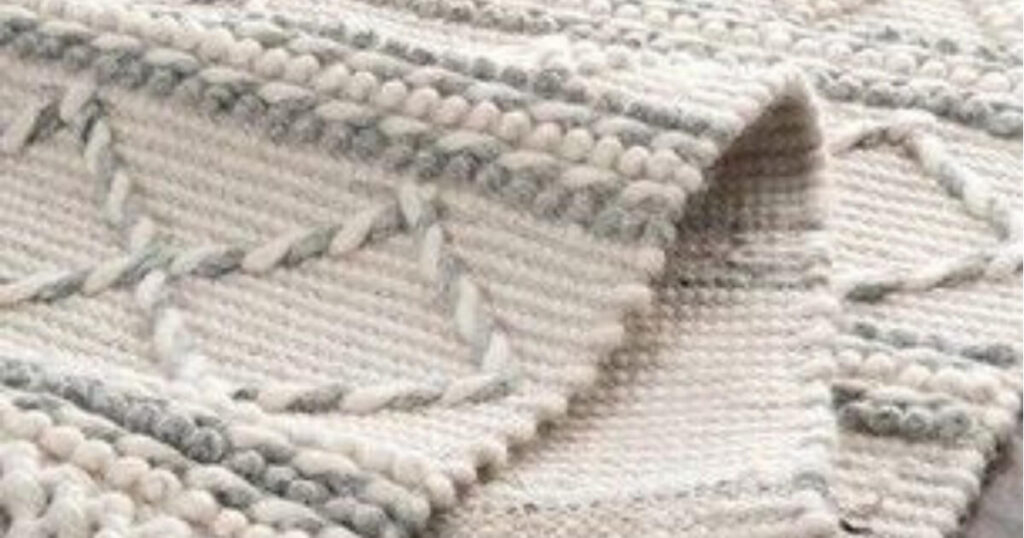
Frequently Asked Questions
1. Is polyester carpet good for pets?
Yes, polyester carpet can be a good choice for homes with pets. Its fibers are naturally stain-resistant to pet accidents and other water-based messes. Many polyester styles come in cut-pile construction, which is less likely to snag on pet claws compared to looped-pile carpets.
2. How long does a polyester carpet typically last?
A good quality polyester carpet can last between 5 and 15 years, depending on fiber quality, pile density, and foot traffic. Proper maintenance, including regular vacuuming and professional cleanings, will significantly extend its lifespan.
3. Is polyester carpet toxic or bad for your health?
No, modern polyester carpets are generally considered safe for your health. They’re manufactured to meet strict indoor air quality standards and emit very low levels of volatile organic compounds (VOCs). Look for carpets with “Green Label Plus” certification from the Carpet and Rug Institute if you’re sensitive to chemicals.
4. Can you use a steam cleaner on a polyester carpet?
Yes, steam cleaning (hot water extraction) is the recommended method for deep cleaning polyester carpets. Most manufacturers suggest professional steam cleaning every 12 to 18 months to remove deep-seated dirt and allergens, maintaining appearance and prolonging life.
5. Does polyester carpet get matted down easily?
Polyester is more prone to matting and crushing than nylon, especially in high-traffic areas. To minimize this, choose polyester carpet with dense, low-pile construction. Regular vacuuming can also help lift fibers and prevent them from becoming flattened over time.
As an Amazon Associate, I earn from qualifying purchases.

